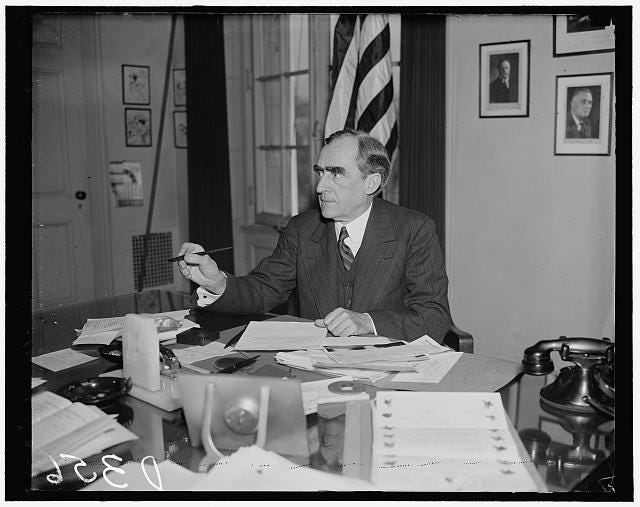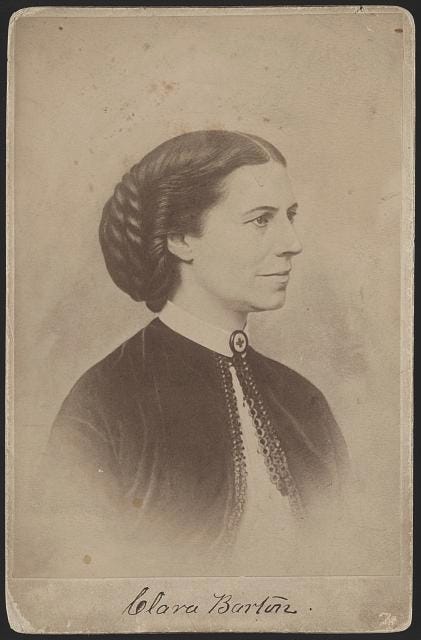
WASHINGTON, D.C. — At Red Cross National Headquarters, it was time to mobilize a relief effort for the escalating situation in the Ohio Valley. It was recorded as Disaster Number 2,128. The next in a long and varied list of domestic and foreign calamities, Disaster Number 2,128 would stand out in ways no one could anticipate at this moment.
The Red Cross had been paying close attention to the weather reports and conditions on the ground in the Ohio and Mississippi valleys. The organization later wrote:
Continuous reports from the Weather Bureau in Washington confirmed fears expressed by [Red Cross] chapters in the [Ohio Valley]. Of course, the rains might cease, or might turn to snow, or the high pressure might move east. None of these prayed for possibilities came to pass.
The number of flood refugees was increasing at a rapid rate in Evansville, Indiana, and the surrounding area. Local chapters were overwhelmed.
So, on this day, January 18, national disaster relief workers boarded trains in Washington, D.C. to begin the journey to Evansville. A coordinated Red Cross response was under way.
Thus, under leaden skies, from which water poured in almost biblical quantities, the Red Cross began its race with death and destruction.
— Report of Relief Operations of the American Red Cross, 1937 Flood Disaster
National headquarters sent telegrams to 40 Red Cross chapters in Indiana and Kentucky, advising “to warn persons in danger, and to evacuate them if necessary.” Chapters near Kentucky’s Green River, an Ohio River tributary, took action to help thousands of people expected to leave their homes due to rising water.
The warnings were not limited to the Ohio Valley. Chapters along the lower Mississippi River and its tributaries also delivered emergency messages.
A Brief History
The American Red Cross was founded on May 21, 1881, by Clara Barton, who was called the “Angel of the Battlefield” because “she nursed, comforted and cooked” for Union soldiers during the Civil War. Barton served as the organization’s first president for 23 years, stepping down at the age of 83.
Following years of strong debate and unsuccessful bills, the organization obtained a Congressional Charter in 1900. Among other things, “the charter granted full legal standing to the organization and protected [its] right to use the red cross emblem ….”
The Congressional Charter
To continue and carry on a system of national and international relief in time of peace and apply the same in mitigating the sufferings caused by pestilence, famine, fire, floods and other great national calamities, and to devise and carry on measures for preventing the same.
By 1937 the American Red Cross had conducted more than 2000 disaster relief operations, including the Great War in Europe (later known as World War I) that began in 1914 and ended when an armistice was signed on November 11, 1918.
The Great War transformed the Red Cross.
By 1918 there were nearly 4,000 chapters, more than 30 million junior and adult members, and over eight million volunteer workers at home and overseas. The organization received $400 million in money and materials during the war. It sent nearly 24,000 nurses into service with the U.S. Army and Navy.
Red Cross nurses and their aides also served during the Influenza Pandemic of 1918, which took three times as many lives as the Great War. In a short time, it became the deadliest illness in human history.
The Red Cross had grown to meet great needs. It was, as one American general later said, “the friendly hand of the nation.”
January 19, 1937
On this Tuesday, Red Cross National Headquarters issued a press release that included the following:
January 19 – Red Cross nurses were offered to State Health Commissioners in Ohio and Indiana. Notified 70 Chapters in Ohio, Indiana, Kentucky and Tennessee to stand by and meet any emergency. Twenty chapters report that they are moving families out and preparing to issue food orders.
However, there was not the same sense of urgency in Jeffersonville, Indiana — at least not from city leaders.
“The situation in Jeffersonville is not viewed with alarm by the officials in charge,” The Evening News reported on this day. “It was stated the water would not prove a serious menace until a thirty-eight-foot stage is reached on the Louisville gauge.”
The newspaper may have reassured local residents that the water had not yet reached a dangerous level. But the report had no bearing on the Ohio River.
Read or listen to the introduction to The 1937 Flood Journal or access the archives for the full chronology and anything you’ve missed.
FRIED BOLOGNA: Family Stories from the American Midwest and Upland South Join me for stories about my ancestors who lived, worked and traveled in the hills and along the rivers of Arkansas, Illinois, Indiana, Iowa, Missouri and beyond.




Great details and information about important time in our country’s history. The American Red Cross continues to provide essential support and assistance to people affected by disaster. Their efforts to help those displaced by the 1937 flood helped to better prepare our country for future disasters.